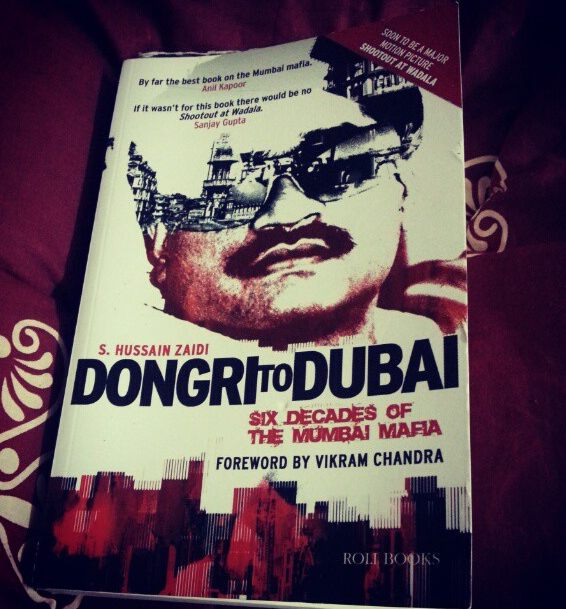S. Hussain Zaidi
As a chronicle of the Mumbai mafia, this book does complete justice to the job. While the ‘hero’ remains the big D, the author traces the history of Bombay’s underworld from the 1950’s until Operation Neptune Spear – Bin Laden’s death – and its repercussions on Dawood.
The book begins with an interview with Dawood Ibrahim in 1997, the last published one, and one that is credited to the author himself, spends a chapter that serves as a synopsis of the don’s life thus far and then quickly zooms back to the 50s and 60s focusing on the birth of Mumbai’s underworld. The triumvirate of Haji Mastan, Karim Lala, and Varadarajan Mudaliar feature prominently in the next few chapters, which are dedicated to the intricacies of gold and electronics smuggling, bootlegging, minor extortion, the prostitution trade, dispute settling and other activities that filled the coffers of Mastan and his allies. Mastan’s search for ‘legitimacy’ and associations with Bollywood and politics are also highlighted, as is the beginning of the underworld’s nexus with the cops and politicians.
The book then moves on to Dawood’s rise – starting from the toppling of Dongri’s incumbent don Baashu Dada to his heist of what he wrongly thought was Mastan’s money and beyond. This section also throws light on the influence of Ibrahim Kaskar, Dawood’s father, a cop who also enjoyed the respect of most of the era’s prominent dons. The emergency, Dawood’s feud with the Pathans, the attempt at a truce at the behest of Mastan, its worsening with the killing of Dawood’s brother, and his subsequent scaling of business form the next few chapters. This also marks the beginning of the second tier of his organisation’s hierarchy – Chhota and Bada Rajan, Chhota Shakeel and later, Anees Ibrahim (Dawood’s brother) and Abu Salem. The Mumbai Police’ hand in Dawood’s rise is chronicled clearly. The demise of the Pathans and the first major round of bloodshed in the mafia’s history are inextricably tied together.
Just before Part 2 – Dawood’s relocation to Dubai and the creation of his empire – is a chapter dedicated to his failed love, and then marriage. The operations from Dubai are detailed really well and not only shows the growing power of the don in terms of settling gang wars, but also his hand in everything from Bollywood to the construction business. The shootout at Lokhandwala and Chhota Rajan’s hand in increasing Dawood’s clout make up the first few chapters in this section. Babri Masjid and the subsequent Mumbai blasts are probably epochal events in Dawood’s life. The book goes soft on his involvement in the blasts though, and holds that he was not a very religious man, and was so stung by accusations that he tried to negotiate a surrender to prove his innocence. But that never happened.
The rumours about Mandakini, split with Rajan and the rise of Shakeel, and relocation to Karachi happen next. Abu Salem’s killing of Gulshan Kumar and the Mumbai cops’ crackdowns on the underworld are the focus here. A few chapters are reserved for Rajan and his escapes from Shakeel’s henchmen. The mafia’s obsession with Bollywood is clearly shown through the ‘Chori Chori Chupke Chupke’ episode where stars and directors were threatened to be part of the mafia’s maiden film venture. Dawood’s hand in the gutka wars and the marriage of his daughter with Miandad’s son also have pages devoted to them – and that includes the IB’s botched attempt (courtesy the Maharashtra police!) at knocking off Dawood. Dawood’s status escalation to international terrorist and making it to the Forbes list of the world’s most powerful men close the book, with the last chapter dedicated to his short term absence from Karachi post Bin Laden’s death.
The book does a great job of capturing information – whether it be the gangs’ operations and domains, their nuanced inter relationships (friendships and rivalries), the milieu that set up their increased prominence, their relationship with Bollywood (including how piracy in Pakistan fund international terrorism!) and most importantly, their love-hate stance with the Mumbai cops. The writing style is very journalistic in the beginning, almost written like a series of episodes with hype built for the entry of Dawood, but later takes a more conventional form. It seems extremely well researched and a must read if you’re interested in the domain.


My only problem with the book is that the author comes across as a Daewood apologist in several chapters. Otherwise it’s great to understand the history of Mumbai underworld. After reading it I also understood who the gangsters in Agneepath (original) were based on.
It’s easy to guess his reasons 😀
Saar exclusive interview plz